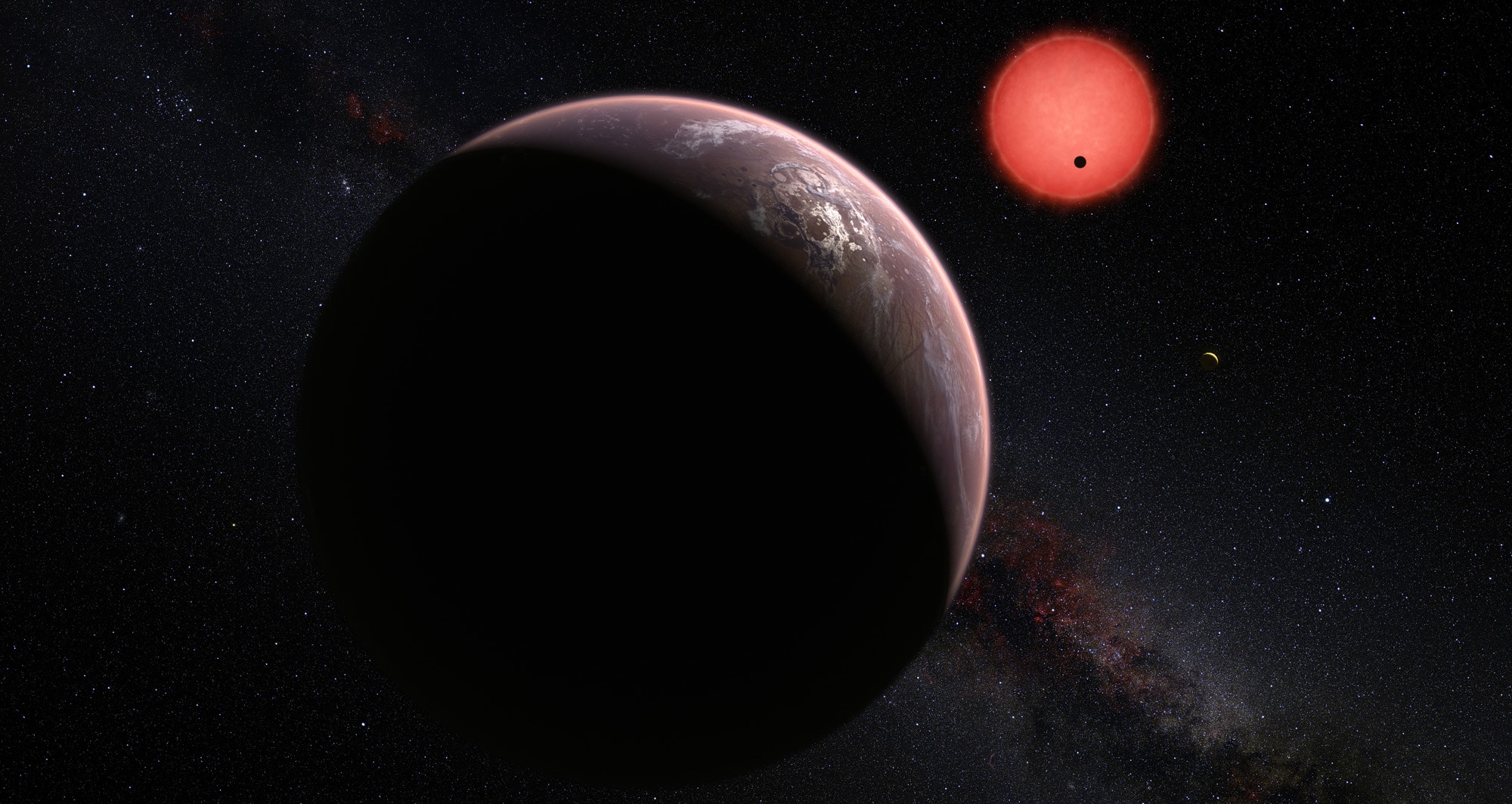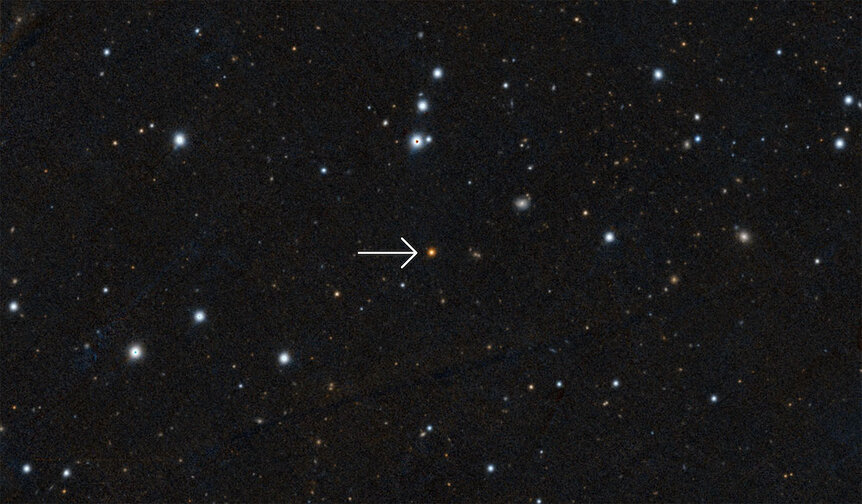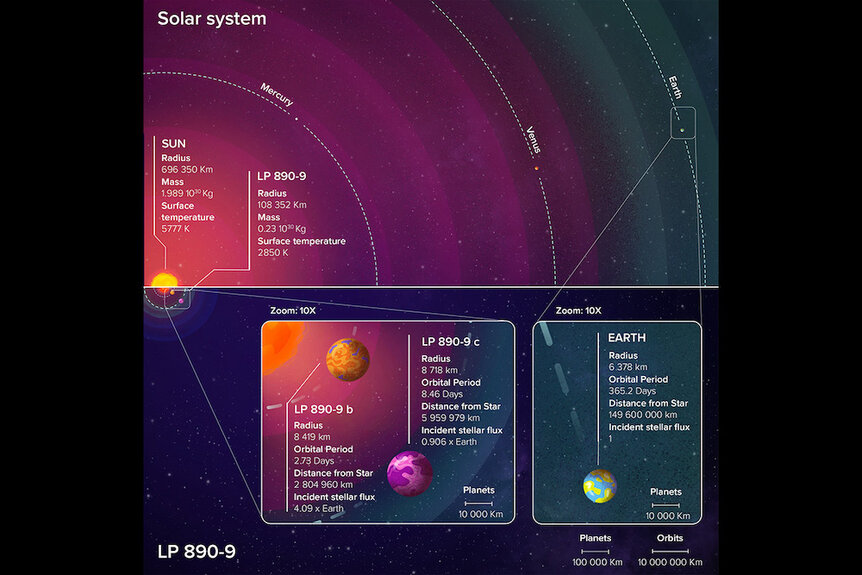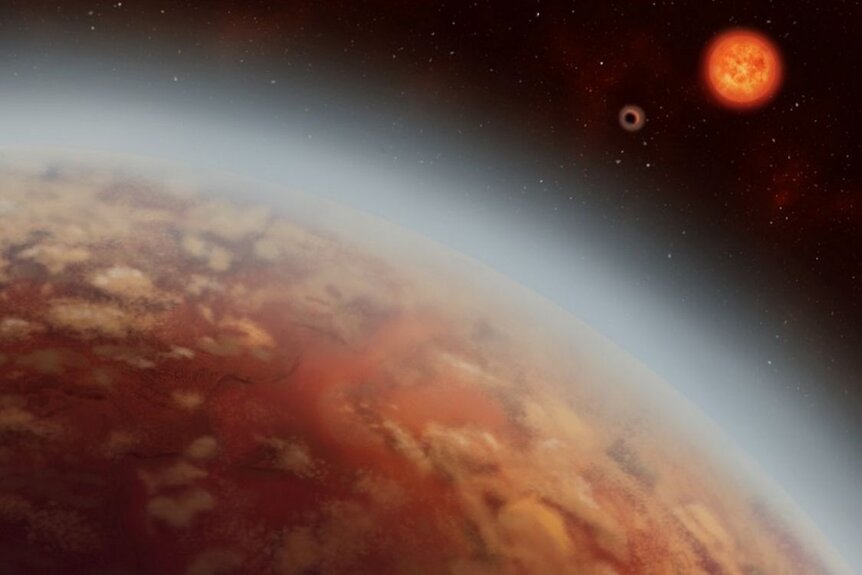Create a free profile to get unlimited access to exclusive videos, sweepstakes, and more!
Two super-Earths found around a tiny red dwarf star — with one in the habitable zone
Small star, big planets, great opportunity.

Very cool exoplanet news, literally: Two super-Earth planets have been found around a red dwarf star, and one of them is at the right distance from its star to — possibly —be reasonably temperate.
The star is called LP 890-9 — the LP stands for Luyten/Palomar; using the big telescope astronomer Willem Luyten mapped and catalogued thousands of nearby stars. LP 890-9 is a very tiny star, a red dwarf with only 1/9th of the Sun’s mass and 1/6th its diameter. Its temperature is only 2,580°C (4,670°F), much cooler than the Sun, and it puts out an incredibly feeble 0.1% as much light as the Sun. At 100 light-years away, relatively close, it’s so faint you need a big ‘scope to see it [link to paper].
The first planet, LP 890-9b, was discovered by TESS, the Transiting Exoplanet Survey Satellite, which scans the entire sky looking at thousands of stars. If we happen to see a star with a planet that orbits edge-on from our point of view, once per orbit it blocks a little bit of the star’s light, an event called a transit. Knowing the size of the star, measuring how much light is blocked gives the size of the planet.
In this case TESS saw a drop in light, but the uncertainty was large, so astronomers followed up with the SPECULOOS telescopes. That stands for Search for habitable Planets EClipsing ULtra-cOOl Stars, a project designed to look at faint red dwarfs for planets. SPECULOOS observations nailed the transit, seeing a 1% dip in the star’s light, indicating the planet has a diameter 1.32 times Earth’s. This makes it a super-Earth, a planet bigger than ours but still much smaller than Neptune, the next largest planet in our solar system.
It orbits its star once every 2.73 days, which means it’s less than 3 million kilometers from the star. That’s close. Still, the star is a dim bulb, so the planet only gets about four times as much energy from the star as we do from the Sun, making it probably about 120°C (250°F). Not habitable by any stretch.
Here’s where it gets fun. The SPECULOOS observations indicated there’s a second planet orbiting LP 890-9. Called LP 890-9c, it’s about 1.37 times Earth’s diameter, so about 17,500 km wide: another super-Earth.
It’s on a wider orbit, too, taking 8.46 days to orbit the star at a distance of about 6 million kilometers. Still close, but again the star is cool, so the temperature of the planet may be a more clement 0° C (30°F). Yes, that may sound cold, but Earth’s temperature without greenhouses gases would be even colder! So if this planet is rocky and has a touch of carbon dioxide in its atmosphere it could actually be temperate.
The problem is we don’t know what the masses are of either planet. That’s needed to find their densities, and that in turn gives us a good idea of what they’re made of. A gas giant has an average density close to that of water, while a rocky/metal planet like Earth has a density over 5 times greater. A lower density could indicate it’s a water world, too.
The mass of an exoplanet can be found using the radial velocity method, but that’s hard to use on really faint stars. Perhaps bigger telescopes could be used to gather enough light to make those observations, but it takes months of observations to build up enough data. So it may be a while.
But it should be done. LP 890-9c is, on paper, perhaps the second best candidate to be Earth-like, after TRAPPIST-1e, an Earth-sized planet orbiting the very tiny red dwarf star TRAPPIST-1. That star is the coolest one known to have planets, and LP 890-9 is the second coolest.
This makes LP 890-9c a great target for JWST observations, to see if it has an atmosphere and perhaps determine what’s in it. That’s already been done for TRAPPIST-1e, though the results haven’t been published yet. Still, in our search for other Earths, these are great places to start.
I love it when planets are found around red dwarfs. They are by far the most common kind of star in the Universe, they tend to make smaller, Earthish-sized planets, and they tend to make a lot of them. Our own world may be an exception in its class, orbiting a white G dwarf star and not a red M dwarf.
The Universe may be filled with rocky worlds orbiting small, faint stars. And we’re only just now starting to find them.





























